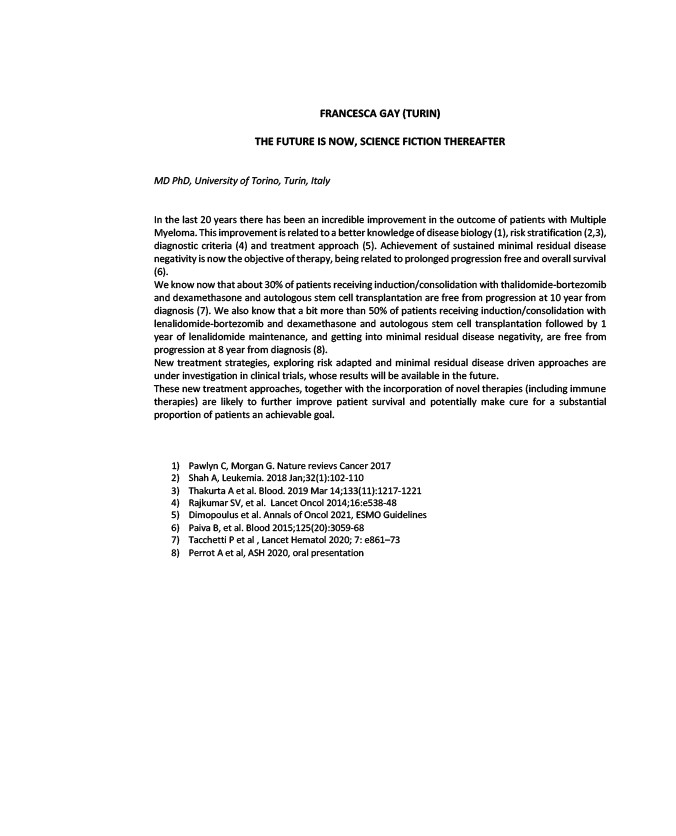
FRANCESCA GAY (TURIN)
THE FUTURE IS NOW, SCIENCE FICTION THEREAFTER
MD PhD, University of Torino, Turin, Italy
In the last 20 years there has been an incredible improvement in the outcome of patients with Multiple
Myeloma. This improvement is related to a better knowledge of disease biology (1), risk stratification (2,3),
diagnostic criteria (4) and treatment approach (5). Achievement of sustained minimal residual disease
negativity is now the objective of therapy, being related to prolonged progression free and overall survival
(6).
We know now that about 30% of patients receiving induction/consolidation with thalidomide-bortezomib
and dexamethasone and autologous stem cell transplantation are free from progression at 10 year from
diagnosis (7). We also know that a bit more than 50% of patients receiving induction/consolidation with
lenalidomide-bortezomib and dexamethasone and autologous stem cell transplantation followed by 1
year of lenalidomide maintenance, and getting into minimal residual disease negativity, are free from
progression at 8 year from diagnosis (8).
New treatment strategies, exploring risk adapted and minimal residual disease driven approaches are
under investigation in clinical trials, whose results will be available in the future.
These new treatment approaches, together with the incorporation of novel therapies (including immune
therapies) are likely to further improve patient survival and potentially make cure for a substantial
proportion of patients an achievable goal.
1) Pawlyn C, Morgan G. Nature revievs Cancer 2017
2) Shah A, Leukemia. 2018 Jan;32(1):102-110
3) Thakurta A et al. Blood. 2019 Mar 14;133(11):1217-1221
4) Rajkumar SV, et al. Lancet Oncol 2014;16:e538-48
5) Dimopoulus et al. Annals of Oncol 2021, ESMO Guidelines
6) Paiva B, et al. Blood 2015;125(20):3059-68
7) Tacchetti P et al , Lancet Hematol 2020; 7: e861–73
8) Perrot A et al, ASH 2020, oral presentation